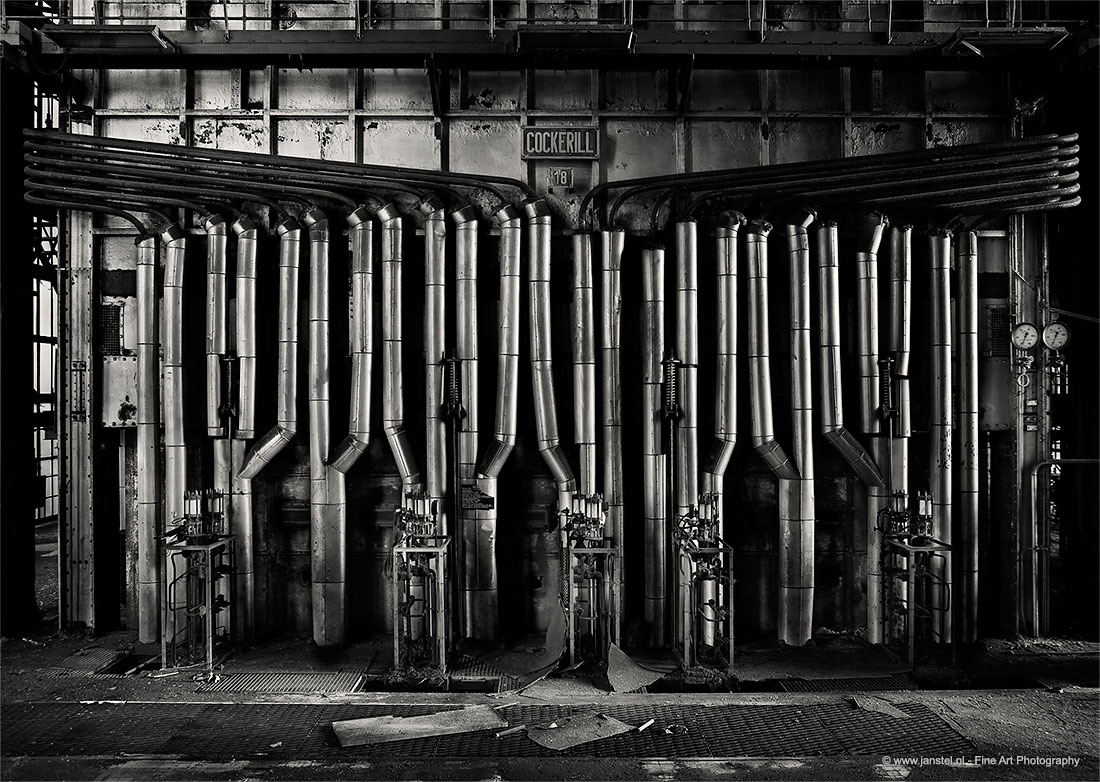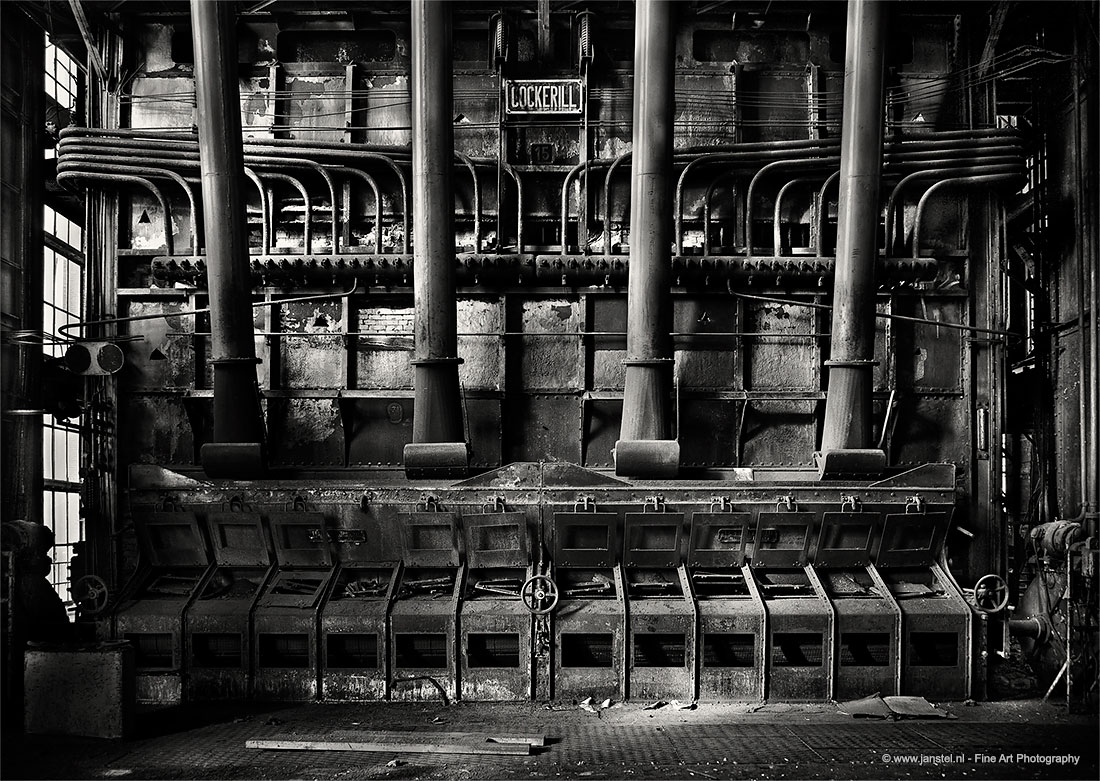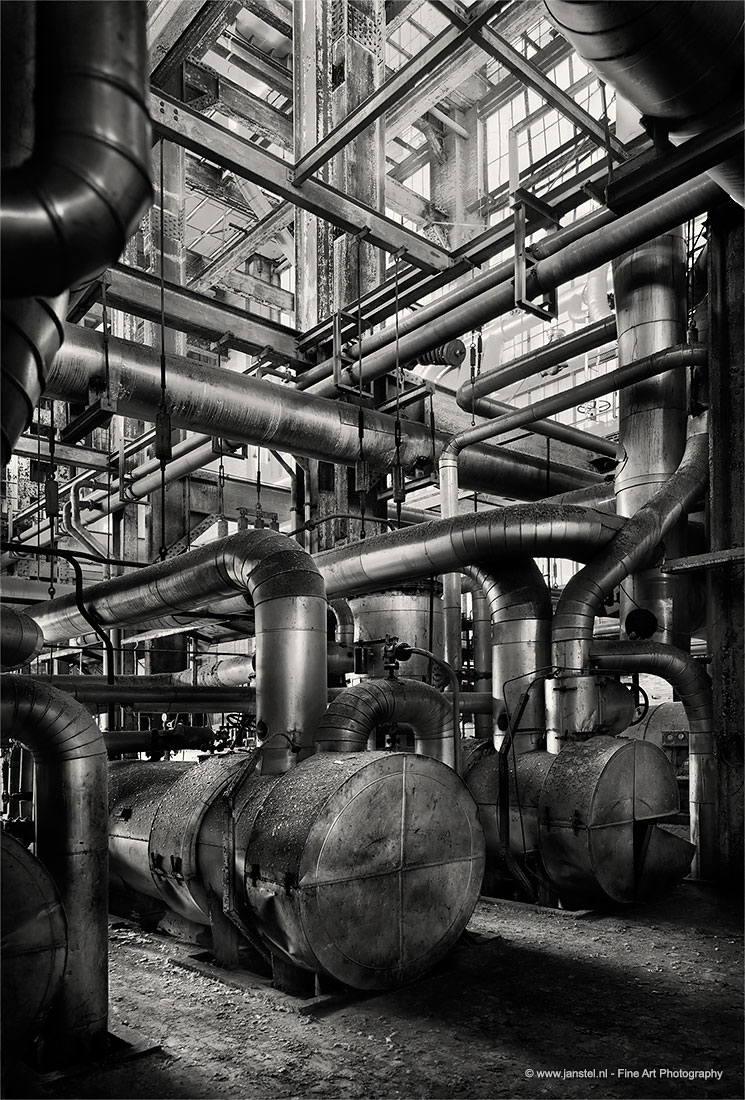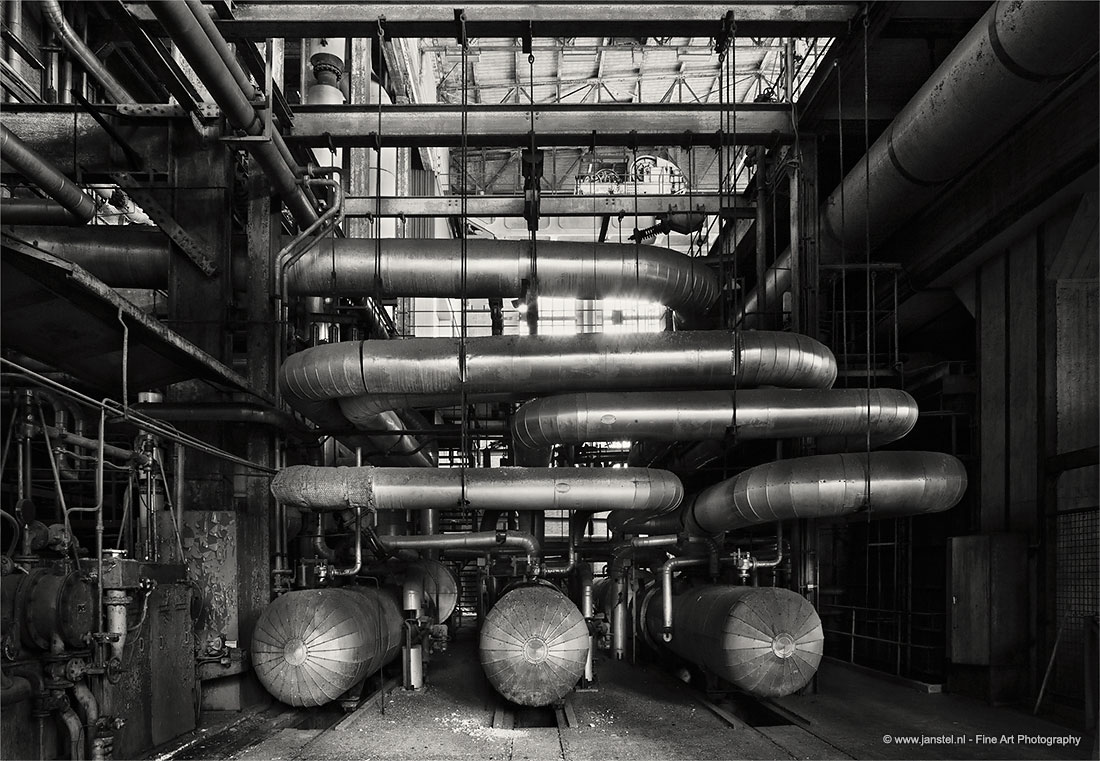“The surreal darkness of this power station reminds one of a scene from the Alien films. The patterns in the ubiquitous black dust resemble the drawings of artist H.R. Giger who was part of the Alien films’ special effects team."
A classic example of “industrial decay” was the Société Centrale d’Electricité du Flandres also known as the ECVB Power Station. Built in Belgium in 1911, the power station started to deliver energy to the heavily industrialized area around Gent. The station contained two 2,000 KW turbo alternators running at 3000 rpm generating 3 phase current at 12,000 volts and 50 cycles. Steam was supplied by three Babcock & Wilcox marine-type boilers at 200 pounds of pressure and around 620˚F (330˚C). Succumbing to extreme economic pressures, the ECVB was abandoned in 2001. Sadly, she was then ripped apart. Copper thieves stole many parts and thus all the historic heritage was lost. With its unearthly steel jungle of valves, pipe networks, gauges and control systems, this architectural masterpiece could easily be mistaken for an abandoned spaceship.
The final curtain of demolition fell in 2012 when all engines and control rooms were removed. The outer walls are still standing, leaving only empty and soulless spaces.
“We had to enter the power station from the railroad at the backside. To surmount the protective wall, we climbed up a big pipe which gave us access to the station. Once on the terrain, we found most doors were wide open, so we could easily enter the main buildings. Lots of original artifacts were still scattered on the desks and in the cabinets. We found everything from hand-drawn engine blueprints to personnel files. Some parts of the station were covered with asbestos, which was the main reason for the closure of the station. Thus, we had to walk around very carefully to avoid spreading the asbestos into the air. It was also absolutely necessary to wear a professional dust mask in these areas.”






